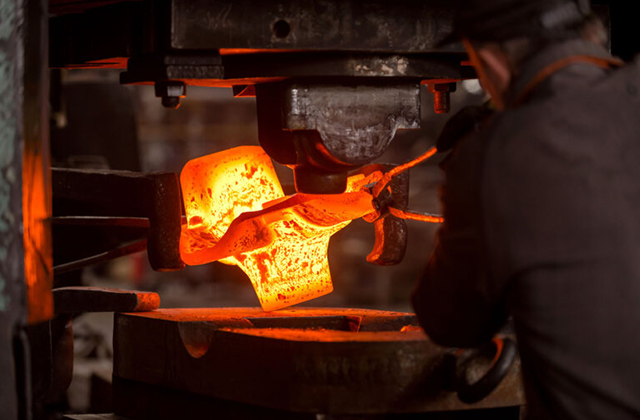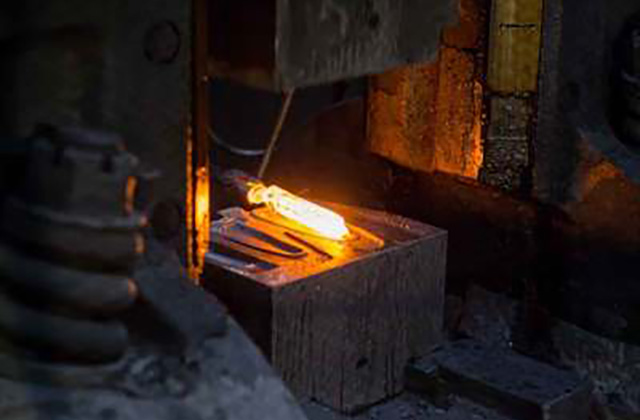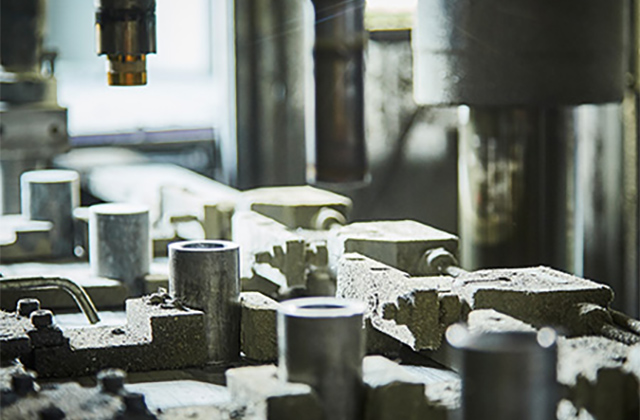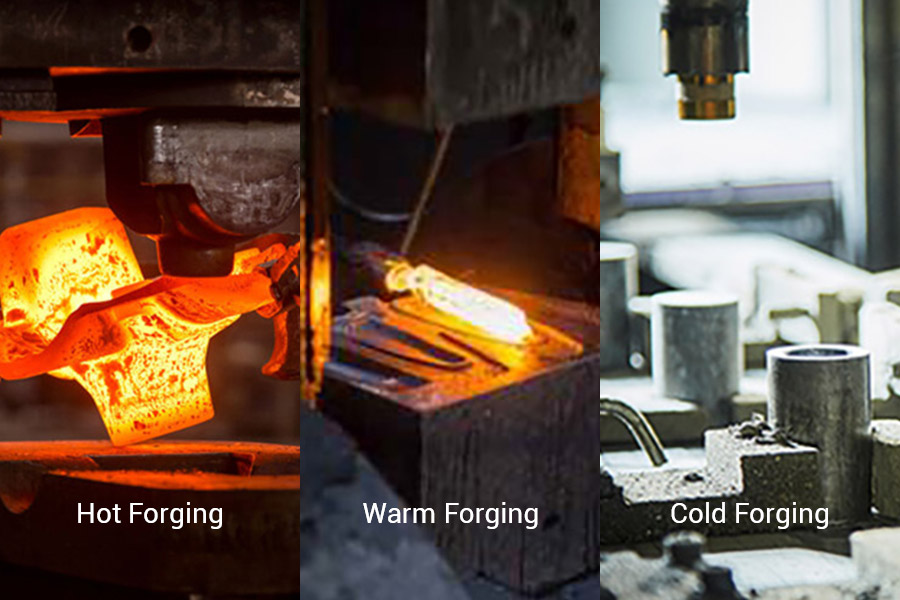Forging is a critical process that transforms metal into durable and precise components. The choice between hot, warm, and cold forging can significantly impact the quality, cost, and application of the final product.
This article delves into the three forging methods, examining their respective benefits and drawbacks to assist you in selecting the most suitable metal forging service for your requirements.
Three Forging Methods Comparison
Forging Method | Hot Forging | Warm Forging | Cold Forging |
Material State | Heated until pliable | Moderately heated | Room temperature |
Typical Temperature | 950°C to 1250°C (1742°F to 2282°F) | 300°C to 700°C (572°F to 1292°F) | Room temperature to 150°C (302°F) |
Material Types | Steel, aluminum, titanium, etc | Steel, aluminum, copper,etc | High-strength steel, precision alloys, softer metals |
Material Deformation | High | Moderate | Low |
Strength and Hardness | Low | Moderate | High |
Surface Finish | Poorer surface finish | Better surface finish compared to hot forging | Best surface finish |
Dimensional Accuracy | Low | Moderate | High |
Tool Wear | High | Moderate | Low |
Energy Consumption | High | Moderate | Low |
Common Applications | Large components, automotive parts | Automotive components, machinery parts | Small precision parts, fasteners, bearings |
Below are detailed pros and cons of each forging method to determine which is best for your manufacturing needs.
Hot Forging

Hot forging uses temperatures above 1,100°C (2,012°F) to make metals like stainless steel and nickel-based alloys highly malleable. It’s ideal for large, complex parts, ensuring excellent material flow and strength.
However, it results in a rougher surface finish due to oxidation and scale, requires high energy input, and leads to increased tool wear with less precise dimensional tolerances.
Pros | Cons |
|
|
Warm Forging

Warm forging operates between 500°C and 1,100°C (932°F and 2,012°F), making it suitable for materials like carbon steels and brass. It offers better surface finish and dimensional accuracy than hot forging, with lower energy consumption and reduced tool wear.
However, it’s less precise than cold forging and requires careful temperature control to ensure optimal results.
Pros | Cons |
|
|
Cold Forging

Cold forging, conducted at or near ambient temperatures, is well-suited for metals such as high-strength steel and precision alloys. It delivers superior surface quality and precise dimensional tolerances with minimal energy and tool wear.
However, it requires higher forces due to reduced ductility and can induce internal stresses. This slower process is best for small, highly precise components.
Pros | Cons |
|
|
Choosing the Right Method
Selecting the appropriate forging method involves considering several factors, including the type of metal, the desired mechanical properties, and cost constraints. Here’s a guide to help you choose the right method for your needs:
- Material Type: If you are working with high-strength steels or precision alloys, cold forging is ideal due to its ability to produce high-precision components with a superior surface finish. For metals like aluminum or magnesium, where enhanced material properties and complex shapes are required, warm forging is often the best choice. Hot forging is suitable for heavy-duty applications involving metals like steel and aluminum, where ductility and reduced internal stresses are critical.
- Desired Properties: For applications requiring a high level of precision and a smooth finish, cold forging should be your method of choice. If you need a balance between strength and ductility, along with a good surface finish, warm forging is appropriate. Hot forging is advantageous when working with metals that require significant deformation and where internal stresses need to be minimized.
- Cost and Energy Considerations: Cold forging is the most energy-efficient and cost-effective for high-precision components but may not be suitable for all materials. Warm forging offers a middle ground with moderate energy requirements and cost. Hot forging, while effective for large-scale and high-strength applications, involves higher energy consumption and costs.
Conclusion
Comprehending the differences among hot, warm, and cold forging techniques enables manufacturers to select the most suitable method for their needs. Each technique presents distinct benefits and challenges related to energy efficiency, cost, precision, and surface quality. Analyzing these factors will help determine the ideal forging approach for your particular projects.

